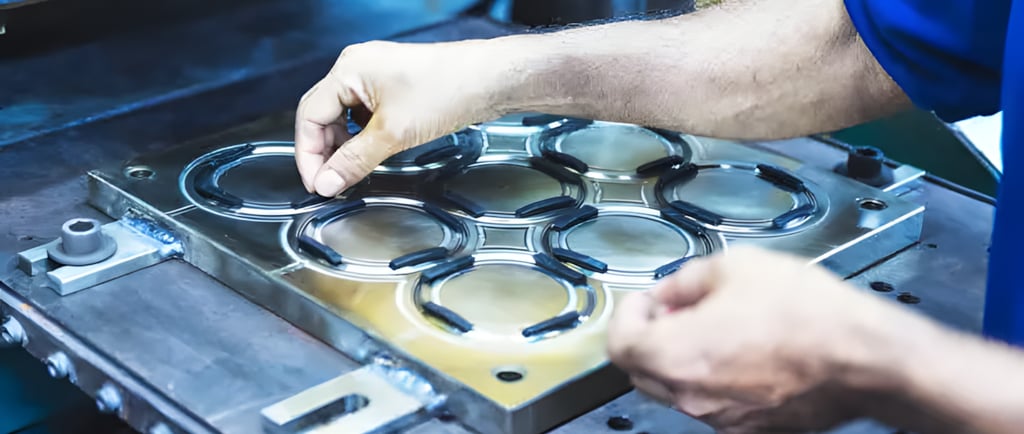The Importance of Mold Design in Successful Injection Molding
Nine times out of ten, the answer lies in the mold design. It’s the unsung hero—or the silent saboteur—of injection molding, especially in electronics where precision isn’t negotiable.
2/23/20255 min read


Picture this: you’re an electronics designer, sipping coffee at your desk, staring at a sleek new housing for a wearable device—maybe a fitness tracker or a smart thermostat. It’s lightweight, precise, and ready for mass production. But then the first batch comes back from the injection molding line, and something’s off. The edges are warped, there’s a faint sink mark on the face, and the snap-fits don’t quite align. Suddenly, that perfect design feels like a headache. What went wrong? Nine times out of ten, the answer lies in the mold design. It’s the unsung hero—or the silent saboteur—of injection molding, especially in electronics where precision isn’t negotiable.
For designers and decision-makers in electronics development, mold design isn’t just a manufacturing detail; it’s the bridge between your vision and a product that works in the real world. It’s where tolerances tighter than a hair’s breadth, cycle times, and production costs collide. Let’s dive into why mold design matters so much, unpack the technical nitty-gritty, and explore how getting it right can make or break your next big project.
The Basics: What Mold Design Brings to the Table
At its core, injection molding is about forcing molten plastic into a mold, letting it cool, and popping out a finished part. Simple, right? Not quite. The mold itself is a marvel of engineering—a metal puzzle box that shapes your part, manages heat, and withstands thousands (or millions) of cycles. For electronics, think enclosures, connectors, or tiny clips that hold circuit boards in place. The mold’s job is to nail every detail.
A typical mold consists of cavities and cores that define your part’s shape, a runner system to deliver the plastic, cooling channels to solidify it, and ejector pins to kick it out. Each piece matters. Take the runner system: in a cold-runner mold, you’re dealing with sprues and gates that can leave vestiges—little nubs you might need to trim off a connector housing. Switch to a hot-runner setup, and you eliminate waste but add complexity and cost. For a high-volume run of USB-C port covers, that choice could swing your budget by thousands.
Then there’s the material. Steel molds—like P20 or hardened H13—are the workhorses for abrasive resins like glass-filled nylon, common in rugged electronics. Aluminum might tempt you for a quick prototype run of a smartwatch casing, but it won’t last under heavy use. These decisions set the stage for everything that follows.
Part Quality: Where Mold Design Shines—or Stumbles
In electronics, part quality isn’t optional. A 0.1 mm warp in a phone case can throw off assembly, and a rough surface on a button can annoy users. Mold design is your first line of defense. Start with dimensional accuracy. Plastics shrink as they cool—maybe 0.5% for ABS, more for polycarbonate. Without proper draft angles (think 1-2 degrees) or uniform wall thickness, you’re begging for warpage. I’ve seen a team scramble to fix a tablet housing that twisted because the mold didn’t account for uneven cooling around a thick boss. A tweak to the gate placement and some cooling channel adjustments saved the day.
Surface finish is another biggie. Your gate—where plastic enters the cavity—dictates flow. A pinpoint gate might work for a tiny LED lens, but misplace it, and you’ll get swirl marks. For a glossy finish, polishing the mold to an A-1 standard is worth the effort. And defects? Sink marks haunt parts with thick sections—like a rib under a PCB mount—unless you balance pressure and cooling. Flash, that pesky overflow at the parting line, screams sloppy mold tolerances. Weld lines, where plastic flows meet, can weaken a snap-fit if venting isn’t spot-on. A mold designer once told me about a frantic redesign for a remote control casing—air traps burned the corners until they added micro-vents. Small fix, big win.
Efficiency: Making Every Second Count
Time is money in electronics production. A mold that cuts cycle time by even a second can save a fortune over a million-unit run. Cooling is the bottleneck—60-70% of your cycle depends on it. Traditional straight cooling channels work, but they’re like a one-size-fits-all jacket. Conformal cooling, where channels curve with the part’s geometry, can slash cooling time by 30%. Picture a mold for a curved monitor stand: conformal channels hug the contours, pulling heat evenly. I’ve seen simulations where this dropped a 20-second cycle to 14 seconds. That’s real money.
Flow matters too. In a multi-cavity mold—say, for eight identical battery covers—unbalanced runners mean some cavities fill faster, leaving others short. A good designer balances the flow, often with software like Moldflow, to keep things consistent. Ejection’s another pinch point. Too little draft, and your part sticks like gum on a shoe. I once watched a line grind to a halt because ejector pins chewed up a delicate sensor housing—adding a half-degree draft fixed it overnight.
The Cost Equation: Pay Now or Pay Later
Mold design decisions hit your wallet hard. Upfront, a complex mold with side actions (for undercuts in a clip) or lifters can cost $50,000 or more. Simplify the geometry, and you might halve that. For a short run of 10,000 IoT device shells, an aluminum mold at $5,000 makes sense. But for a million-unit run, steel’s durability pays off. Maintenance adds up too—abrasive materials like glass-filled resins chew through soft molds fast.
Poor design stings worse. A mold that produces 5% scrap—say, warped circuit board spacers—can tank your margins. Downtime for repairs? That’s lost production. I recall a team who skimped on cooling design for a router casing mold. Hotspots caused inconsistent cycles, and they burned through $20,000 in rework before biting the bullet on a redesign. Invest in the mold upfront, and you’ll sleep better.
Advanced Tricks for the Electronics Crowd
Electronics pushes mold design to the edge. Simulation tools like Autodesk Moldflow or SolidWorks Plastics are your best friends. They predict flow, cooling, and warpage before you cut steel. For a multi-material part—like a soft-touch grip on a controller—simulations ensure the TPE bonds to the ABS without delaminating. Overmolding’s tricky too; thermal expansion differences can crack a part if the mold isn’t tuned right.
Micro-molding’s a whole other beast. Think tiny connectors or pins for a chipset—tolerances in the microns, dozens of cavities in one mold. Precision here is brutal, but the payoff is mass-producing intricate parts fast. And don’t sleep on additive manufacturing. 3D-printed mold inserts or conformal cooling channels can prototype a smartwatch bezel mold in days, not weeks. I’ve seen startups use this to iterate designs while the big players were still sketching.
Pitfalls to Dodge
Even pros trip up. Underestimating shrinkage is a classic—your cavity’s too small, and parts don’t fit. I’ve watched panicked designers tweak molds mid-run because they ignored polycarbonate’s quirks. Inadequate venting’s another killer. Air traps in a tight headphone jack mold once left burn marks until vents were added. And overcomplicating? A team I know designed a slider mechanism for a USB cover that could’ve been a simple snap-fit—cost them $10,000 extra for no gain.
Real story: a wearable device mold kept short-shotting near a corner. The gate was too far, starving the flow. Moving it closer and tweaking the runner fixed it in a week. Lessons like that stick with you.
Wrapping Up: Mold Design Is Your Superpower
Injection molding isn’t forgiving, especially in electronics where every micron and millisecond counts. Mold design isn’t just a step—it’s the linchpin. Get it right, and you’ve got pristine parts, humming production lines, and happy accountants. Skimp on it, and you’re firefighting defects while deadlines slip.
So, collaborate with your mold maker early. Lean on simulation tools to spot trouble before it hits. Iterate your design until it’s bulletproof. In a field where innovation meets execution, a killer mold design isn’t just important—it’s your edge. Next time you’re sketching that game-changing gadget, remember: the mold’s where your dream becomes reality. Make it count.
